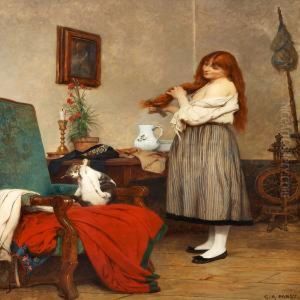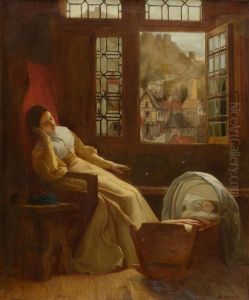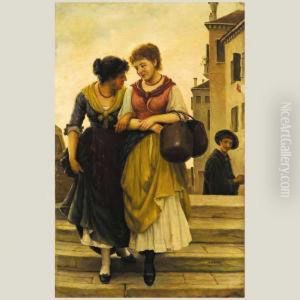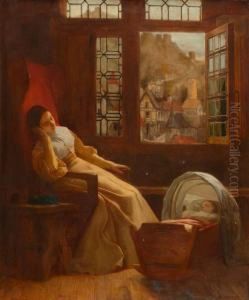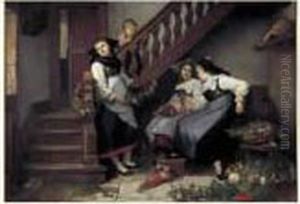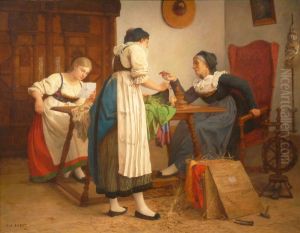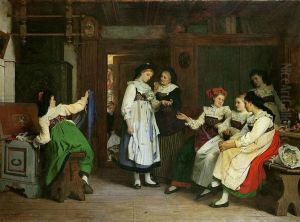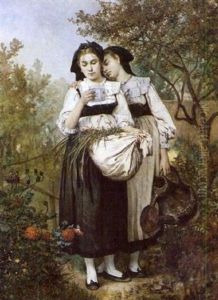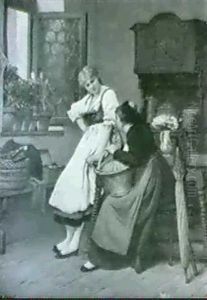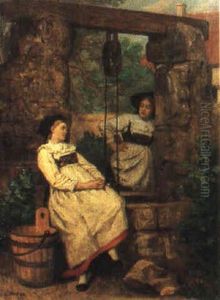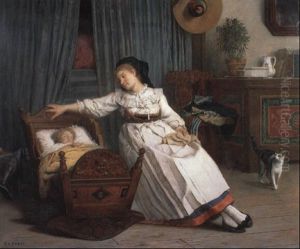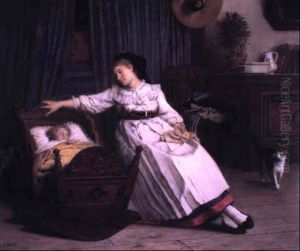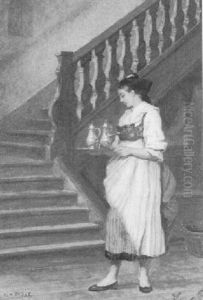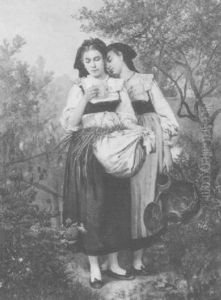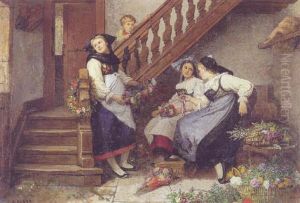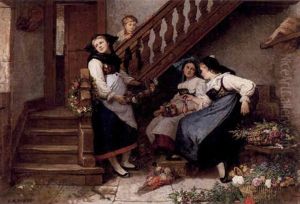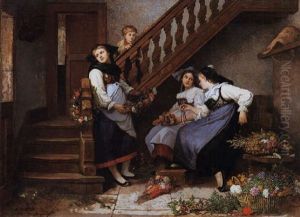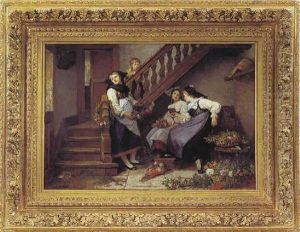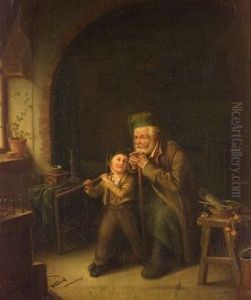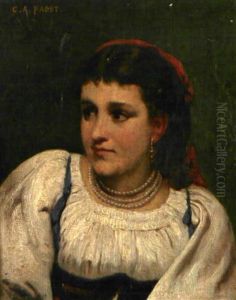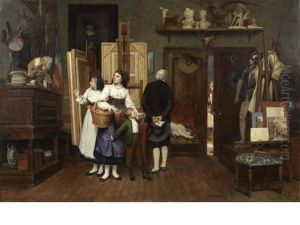Camille Alfred Pabst Paintings
Camille Alfred Pabst was a French genre painter, born in 1828 in Strasbourg, France. His artistic journey reflects a deep engagement with the portrayal of everyday life, encapsulating moments of simple beauty, societal norms, and the human condition within the 19th-century French context. Pabst's work, largely influenced by the genre painting tradition, often depicted scenes of domestic life, rural landscapes, and intimate gatherings, showcasing his keen observation and ability to capture the essence of his subjects with sensitivity and finesse.
Pabst's education and artistic training took place during a vibrant period in French art, amidst the rise of Realism and the later emergence of Impressionism. Though not much is documented about his early education, it is known that he studied in Paris, which was the epicenter of artistic innovation and debate during his formative years. In Paris, Pabst would have been exposed to a wide array of artistic movements and styles, as well as the works of contemporaries and predecessors, which influenced his approach to genre painting.
Throughout his career, Pabst exhibited his works in various salons and galleries, gaining recognition for his detailed and thoughtful compositions. His paintings, characterized by their delicate brushwork, nuanced use of color, and attentiveness to light and shadow, earned him a place among the notable genre painters of his time. Pabst's ability to evoke emotion and narrative through his portrayal of ordinary scenes and characters resonated with audiences, reflecting broader societal interests in themes of family, labor, and leisure during the period.
Camille Alfred Pabst's contribution to the art world extends beyond his paintings; his work provides a window into the daily lives and social dynamics of 19th-century France, offering insights into the era's cultural and artistic milieu. Despite his death in 1898, Pabst's legacy endures through his art, which continues to be appreciated for its historical significance and artistic merit. His paintings remain in collections and museums, attesting to his skill and enduring appeal as a storyteller through the medium of paint.
